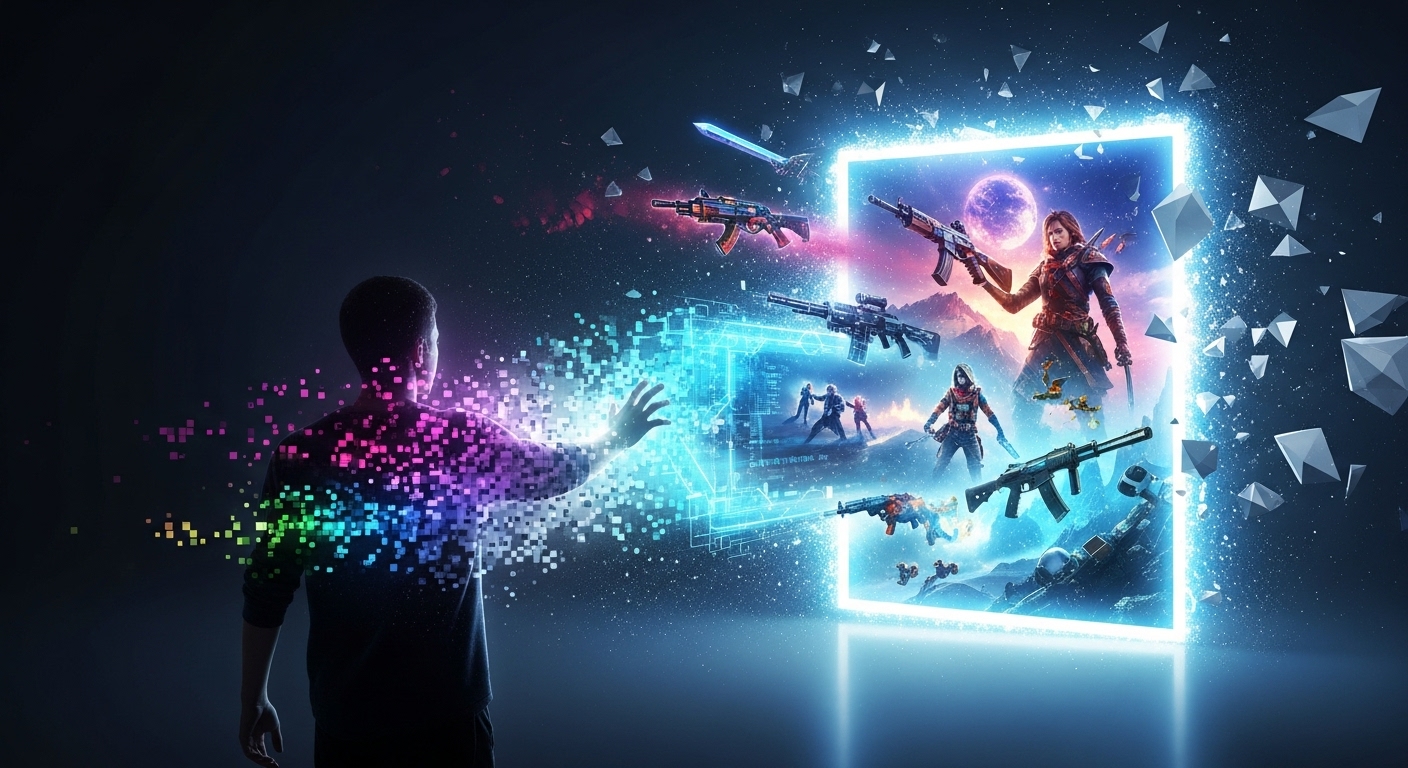The world of gaming has evolved beyond recognition. From the days of pixelated screens and simple joystick controls to today’s immersive virtual worlds and lifelike graphics, technology has shaped the gaming experience into something both extraordinary and endlessly captivating. With the rise of new gaming platforms, AI-driven worlds, and cloud gaming, the future of gaming is more exciting than ever before. In this post, we’ll take a closer look at how gaming has transformed and where it’s headed in the future.
The Golden Age of Gaming: From Arcades to Consoles
Video games have been part of popular culture for decades, and their rise started in the 1970s and 1980s. The first arcade games like Pong and Space Invaders captivated a generation with simple yet addictive gameplay. These games, though primitive by today’s standards, sparked the imagination of millions and laid the foundation for the booming video game industry.
The 1980s and 1990s ushered in the home console era with systems like the Nintendo Entertainment System (NES), Sega Genesis, and PlayStation. These consoles introduced gamers to iconic franchises such as Super Mario, Sonic the Hedgehog, and Final Fantasy, elevating gaming from a niche activity to a mainstream pastime. By the time we reached the late 1990s and early 2000s, 3D graphics had become the norm, and games like The Legend of Zelda: Ocarina of Time and Halo set new standards for what video games could achieve in terms of storytelling and gameplay.
Multiplayer Evolution: The Rise of Online Communities
The shift from single-player experiences to multiplayer gaming has been one of the most significant changes in the industry. In the early days, games were often played alone or with friends in person. However, the advent of the internet changed everything, enabling players to compete and collaborate with others around the world.
Massively multiplayer online role-playing games (MMORPGs) like World of Warcraft revolutionized how people interact with each other in virtual spaces. Players no longer had to rely on local multiplayer options; they could connect with thousands, even millions, of other players in a shared world. Online games like Fortnite and Call of Duty have since popularized competitive gaming, where players can test their skills against others in real-time.
In addition to the rise of competitive gaming, social platforms like Twitch and YouTube Gaming have transformed gaming into a spectator sport. Players and fans alike can watch live-streamed events, interact with their favorite gamers, and build communities around shared interests. Gaming is no longer just a solo activity—it’s a way to connect, share experiences, and build lasting friendships.
Technological Advances: From Graphics to Immersion
Gaming has always pushed the boundaries of technology, and today’s advancements are no exception. The leap from 8-bit and 16-bit graphics to high-definition, 4K, and even 8K visuals has been nothing short of astounding. Modern consoles like the PlayStation 5 and Xbox Series X boast hardware that can render photorealistic environments with stunning detail and fluid motion.
However, it’s not just about better graphics; it’s about immersion. Virtual reality (VR) and augmented reality (AR) have opened entirely new dimensions of gaming. With VR headsets like Oculus Quest and PlayStation VR, players can step into fully immersive digital worlds, offering a sense of presence and interaction that traditional gaming setups can’t match. Meanwhile, AR games like Pokémon GO have shown that blending the virtual and real world can offer fun and engaging experiences.
As VR and AR technologies continue to mature, gaming will become more interactive, personalized, and engaging. Whether it’s exploring alien planets, solving puzzles, or fighting dragons, future games will allow players to become active participants in these virtual experiences rather than just observers.
Mobile Gaming: Gaming on the Go
Gone are the days when gaming was restricted to consoles or PCs. The rise of smartphones has made gaming more accessible than ever before, with mobile games accounting for a significant portion of the gaming industry. Whether it’s puzzle games, battle royales, or role-playing games, mobile platforms offer a wide range of experiences for both casual and hardcore gamers.
The popularity of mobile gaming has also spurred new business models, particularly free-to-play games with microtransactions. Games like Clash Royale, Candy Crush Saga, and PUBG Mobile offer engaging experiences that can be played in short bursts, making them perfect for gaming on the go. While these games are often free to download, they generate revenue through in-game purchases, allowing developers to continually update and improve the gaming experience.
With advancements in mobile hardware and software, mobile games are becoming more sophisticated, offering graphics and gameplay that rival traditional consoles. This trend is expected to continue, with more developers investing in high-quality, mobile-first games that can deliver the same level of depth and engagement as their console counterparts.
Cloud Gaming: A Revolution in Accessibility
Cloud gaming is one of the most exciting developments in the gaming world. Rather than relying on expensive hardware or physical game discs, cloud gaming allows players to stream games directly from the cloud to their devices. Services like Google Stadia, Xbox Cloud Gaming (formerly Project xCloud), and NVIDIA GeForce Now allow players to access a wide range of titles without needing a powerful gaming PC or console.
The benefits of cloud gaming are clear: it removes hardware limitations and makes high-quality gaming accessible to anyone with a stable internet connection. Players can enjoy the latest AAA titles on smartphones, tablets, or even smart TVs, without the need for costly gaming equipment. As internet speeds continue to improve globally, cloud gaming could become the primary way people experience games, making gaming more accessible and convenient than ever.
Cloud gaming also allows for greater flexibility in terms of device compatibility. Players could start a game on their console at home and then pick it up again on their mobile device while commuting. This “play anywhere” model has the potential to change the way people approach gaming, providing an unprecedented level of convenience and versatility.
The Future of Gaming: AI, Procedural Worlds, and Beyond
Looking ahead, the future of gaming is bound to be shaped by exciting developments in artificial intelligence (AI), procedural generation, and more. AI will continue to enhance gaming experiences by creating smarter, more dynamic characters that react to player choices in more natural and unpredictable ways. Games could feature NPCs that learn from their interactions with players, offering unique storylines and challenges each time they’re played.
Procedural generation, which creates content algorithmically rather than manually, will also play a larger role in the future of gaming. This technology has already been used in games like Minecraft and No Man’s Sky to create vast, ever-changing worlds. In the future, it’s possible that entire game universes could be procedurally generated, offering endless possibilities for exploration and adventure without the limitations of pre-designed content.
Additionally, advancements in machine learning and deep learning could allow for the creation of more realistic, responsive environments where the game world adapts to the player’s actions, creating a truly personalized experience. The potential for innovation in AI and procedural generation means that the future of gaming will be unpredictable, with new surprises waiting around every corner.
Conclusion: A World of Endless Possibilities
The gaming industry is evolving faster than ever, with technological innovations opening up new worlds of possibilities. From cloud gaming and mobile platforms to virtual reality and AI-driven gameplay, gaming is becoming more immersive, accessible, and interactive. What was once a solitary activity has grown into a global, connected experience, with players coming together in virtual spaces to collaborate, compete, and share in their passion for gaming.
As we look to the future, one thing is certain: gaming will continue to grow, innovate, and captivate audiences in ways we can’t yet fully imagine. Whether it’s through cutting-edge technology, new business models, or the rise of virtual worlds, the gaming experience will keep evolving, offering something for everyone—no matter where or how they play. The future of gaming is bright, and it’s only just getting started.



